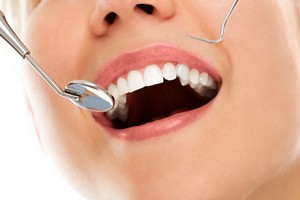Why replace brake pads?
Obviously the most common reason for getting new brake pads is to replace older, worn pads. This is simply part of the ongoing cost of maintaining a car. Worn brake pads affect the performance of your vehicle; accidents are far more costly than regular maintenance. When a car goes from worn old brake pads to new pads the difference in performance is quite noticeable, often to the point that the driver has to get used to how the car handles/ replacing the pads more often reduces this change.
Different brake pads for your car
You may notice more than one option in the brake pads catalogue for your model of car. It is quite possible that your model of car sees different conditions depending on where and how it is driven, or that different counties have different expectations for braking performance. European manufacturers often emphasis very smooth and solid performance with brakes. Unfortunately this type of pad wears very quickly, giving both a reduced operational life and a problem with accumulating dust (from the wearing pad) in the vehicle’s mechanism. Replacing these brake pads can be a smart move. Brake pads designed for long term use in general driving can provide comparable performance to the pads that came with the car, only with longer service and far less dust problems. Talk to brake pads suppliers about different options for your car’s brakes.
Issues with Pads
Some older brakes used asbestos, which has now been linked to serious health concerns. This is no longer much of an issue as these older style pads have long since been replaced. Unless a car has been sitting in a garage for several decades it is unlikely to have asbestos components.
Rumours circulate on the internet that brakes contain mercury and aluminium, and that this is a hazard. Aluminium is used in some brake mechanisms, but this has never been considered dangerous. Mercury does not appear to have ever been used in brake pads. Confusion many be due to the fact that there is a brake manufacturing company named Mercury.
Brake materials
Metal Pads are used almost exclusively for racing vehicles. They do endure continual use, but they quickly wear the car’s rotors.
Non-metallic pads are popular with European cars. They are gentle but wear quickly and produce dust.
Semi-metallic pads are popular. They last longer than non-metallic pads and only cause moderate mechanical wear. They do require more force than noon-metallic systems.
Ceramic Brake pads are quiet and a good compromise between durability and performance. They are less able to dissipate heat, however, so warping can occur when surrounding materials and the ceramic pads reach different temperatures.
Availability
Due to the popularity of refitting more suitable brake pads many services centres buy replacements for European brake pads wholesale, allowing a relatively inexpensive upgrade for a vehicle’s system. It is unnecessary to use faster wearing or sports brake pads on Sydney roads. Popular ceramic, metal or part-metal pads provide dependable long term braking performance
Thanks to Icer Brakes Oceania for the blog post. To find a brake pad for your vehicle, feel free to visit Icer Oceania.

 In the hustle and bustle of daily life, it’s all too common to overlook the significance of maintaining good dental health. The allure of the lingering taste from a delicious meal often prevails over the strong flavor of toothpaste. Some may claim a lack of time for proper oral care, but dedicating a few minutes each day to brushing one’s teeth can prevent a host of dental issues and the discomfort associated with extensive dental procedures in the future. A study once revealed that successful individuals were those who prioritized short-term inconvenience over long-term problems—a principle that holds true for oral health.
In the hustle and bustle of daily life, it’s all too common to overlook the significance of maintaining good dental health. The allure of the lingering taste from a delicious meal often prevails over the strong flavor of toothpaste. Some may claim a lack of time for proper oral care, but dedicating a few minutes each day to brushing one’s teeth can prevent a host of dental issues and the discomfort associated with extensive dental procedures in the future. A study once revealed that successful individuals were those who prioritized short-term inconvenience over long-term problems—a principle that holds true for oral health.